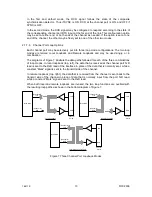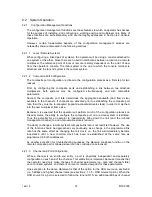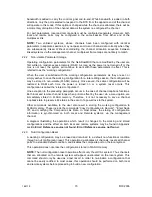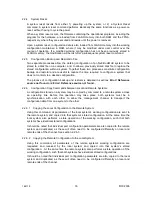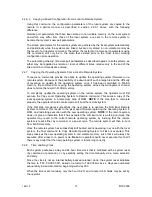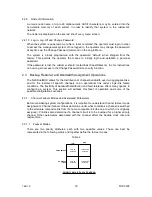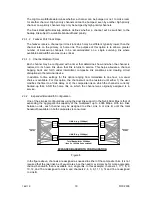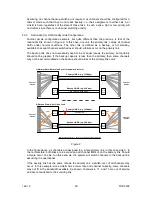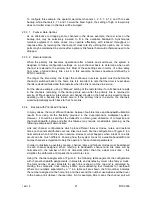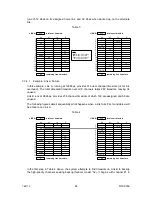
166119
8/31/2006
7
2.1.1.1 Timeslots and Channel Rates
The number of timeslots assigned to a channel determine the bandwidth of the channel,
Since the frame rate is constant, the greater the number of channel bits in the frame, the
greater the port rate that can be supported.
The basic frame rate is 400 frames-per-second, and each channel bit, or timeslot in the frame
provides 400 Hz of bandwidth available for allocation to a channel. This allows port rates that
are multiples of this rate to be supported. For example, 19.2KHz is 48 x 400 Hz, and
therefore requires 48 timeslots per frame.
Timeslots are assigned in a manner that distributes their placement throughout the frame.
The purpose of this method is to insure that the rate of arrival or departure of channel bits on
the composite port is approximately matched to the bit rate of the channel port, and therefore
minimizes the requirement for an elastic storage buffer for each channel.
In addition, by not requiring a pre-determined timeslot map for each channel or channel rate,
channels may be allocated and de-allocated from time to time without disrupting the
operation or data flow of other channels. In other words, newly allocated channels are fit into
the timeslot map wherever there are available timeslots, but do not affect those already
assigned.
The above concepts are illustrated in the diagram of Figure 4. In this simple case, the
composite frame is 20 bits, corresponding to an 8KHz link. The frame size could be chosen
as large as 320 bits (128KHz), but for simplicity 8KHz is chosen. Given that the frame bit
occupies 1 bit (400Hz), and the management channel 3 bits (1200Hz), 16 bits are left in
which to assign channel bandwidth.
The first channel, “a”, is 2400Bps and is assigned available timeslot positions 5, 6, 9, 12, 15,
and 18. (The pattern is unimportant, but noteworthy that the timeslots are distributed
throughout the frame, and their location in the timeslot map allocates them to channel “a”.
When channel “b” is allocated, also 2400Bps, the timeslots are chosen from among the
remaining available timeslots, but in a different placement and pattern. None of the timeslots
of channel “a” are disturbed in the process. When complete, there are still 4 timeslots
remaining corresponding to 1600Hz of bandwidth, enough for a 1200Bps channel, for
example.
Although this is a very simple example (8KHz composite is usually insufficient), higher link
rate examples may be configured and are assigned in the same way. All 16 ports may be
time-division multiplexed on the composite link given sufficient bandwidth. The 1600Hz
required for the framing bit and the management channel is fixed however, and must be
considered when planning channel allocation.
Summary of Contents for Nx8- Dual Composite MUX High-Speed 16-Port TDM Multiplexer
Page 2: ......
Page 6: ...166119 8 31 2006 2...
Page 32: ...166119 8 31 2006 28...
Page 38: ...166119 8 31 2006 34...
Page 61: ...166119 8 31 2006 57...
Page 62: ...166119 8 31 2006 58...

















